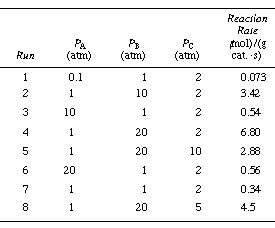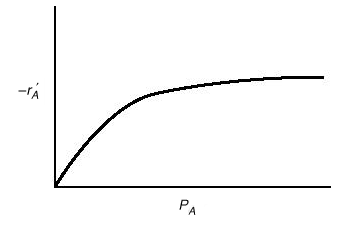Chapter 10: Catalysis and Catalytic Reactors
Learning Resources
Example CD10-1: Analysis of a Heterogeneous Reaction
[Class Problem, Winter 1997]| Experimental data for the gas-phase catalytic reaction | ||
|
|
||
| are shown below. The limiting step in the reaction is known to be irreversible, so that the overall reaction is irreversible. The reaction was carried out in a differential reactor to which A, B, and C were all fed. | ||
|
(a) Sketch (b) From your observations in part (a), which species would appear in the numerator of the rate expression? Which species would appear in the denominator of the rate expression? To what power is the denominator raised?
(c) From your conclusions from part (b), suggest a rate law consistent with the experimental data. |
||
|
(d) Evaluate the rate law parameters. (e) From your rate expression, which species can you conclude are adsorbed on the surface? (f) From your conclusions in part (e), suggest a mechanism and rate-limiting step for this reaction. (g) For an entering partial pressure of A of 2 atm in a PBR, what is the ratio of sites of A to C sites at 80% conversion of A? (h) At what conversion are the number of A and C sites equal? |
||
Solution(a) Compare runs 1, 3, 6, and 7. P B and P C are fixed. As P A increases the rate first increases then levels off. Therefore, P A must be in both the numerator and denominator.
|
||
Compare runs 4 and 5. PA and PB are fixed. Because the reaction is irreversible, PC must be in the denominator.
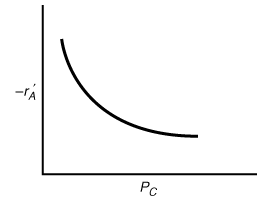 |
||
Compare runs 2 and 7. PA and PC are fixed.  |
||
|
(b) A and B are in the numerator, C and A are in the denominator. (c) (d) For fixed P C and P B , |
||
|
|
||
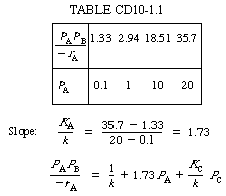
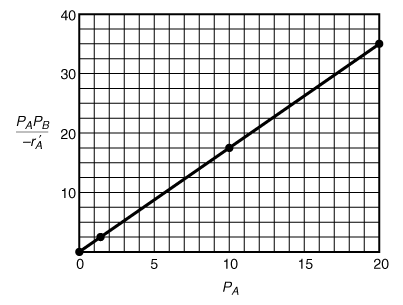 |
||
| For fixed P A and P B | ||
  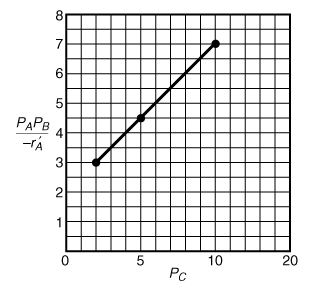 |
||

We note that the non-linear regression techniques described in Chapter 5 could have easily been used. |
Find the Mechanism and Rate Limiting Step
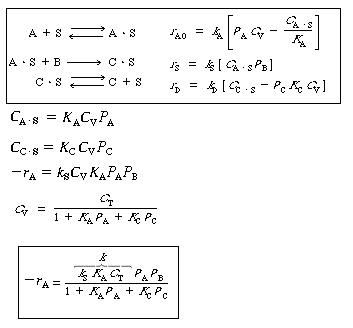
(f) A and C are on the surface
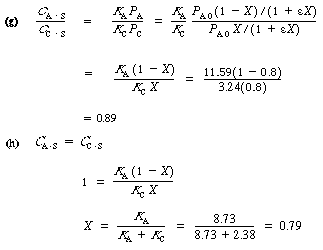
|
